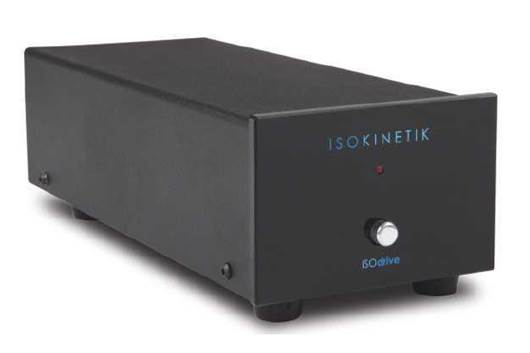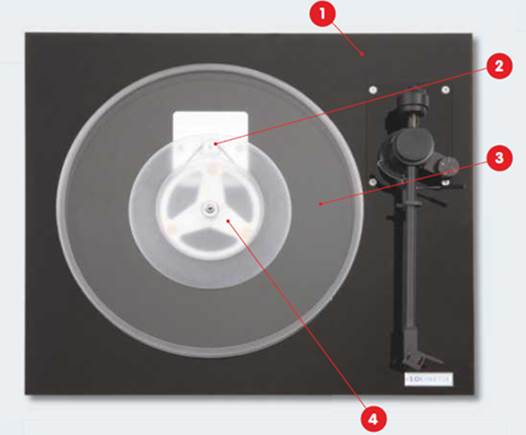Sound quality
As it is relatively easy to install the
M1.5 sub-plinth upgrade onto the Modular One turntable, I was able to make
direct comparisons between the two options.
First to be rotated is an excellent
recording of Vivaldi’s 12 Concerti, Op.7 with Salvatore Accardo, Heinz Holliger
and I Musici (Philips 2 LP boxed set 6700 100). The only thing I can say is:
“Wow”! The first thing to hit me is the imaging – the instruments’ positions
are crystal clear. There is also far more detail apparent in the quieter
sections. The sheer, stunning realism of the performance is superb and
extremely captivating, making the music never less than completely compelling.
Because I have a feeling that the
sub-plinth is doing a great job of absorbing and isolating vibrations from the
main plinth, I decide to try out something with loads of bass – some J S Bach
organ music! My recording of Michael Murray playing Bach’s Fantasia and Fugue
in G minor on Telarc DG-10049 fits the bill perfectly. The bass reveals itself
to be super-tight but not overly restrained. The overall performance feels
effortless and even when my woofers are blowing a gentle breeze in my direction
during the crescendos; my system feels like it has a lot more to give.
The top end shows a noticeable
improvement with the M1.5 compared with the Modular One
Next up for a change of pace I decide to
give the M1.5 a taste of jazz. I opt for a recent addition to my collection,
which is one of the better recordings of Miles Davis’ Kind of Blue on CBS 62066
– the 1960 stereo issue from Columbia Broadcasting Systems. Although this
stereo release is guilty of playing ‘sax on the left, trumpet in the middle and
drums on the right’, it nevertheless is a fantastic analogue recording that has
huge presence and dynamics. Once again, the M1.5 reveals all of the innate
beauty of the recording. In particular, the hi-hat on All Blues (or “All Blue”
as it’s printed on the disc label) is extremely clear and crisp – something
that is very lacking on the CD and digital versions I have heard of this
recording, I might add. In fact, the top end shows a noticeable improvement
with the M1.5 compared with the Modular One and this is something I was not
expecting. Also, the bass is tight and in perfect proportion.

The
ISOdrive power supply has a button to change from 33 to 45rpm
Changing pace a touch, Laurent Garnier’s
Tales of a Kleptomaniac is similarly rendered in an effortless fashion. In
particular, the massive techno bass achieves incredible control and tightness
without any sense of being unnecessarily restrained. In fact, when I move from
my listening room to my study to make a few notes, I can hear the metal filing
cabinet in the study vibrating in sympathy with the heavy bass beats emanating
from the other room.
As with any other recordings I throw the
Modular 1.5’s way, the top end is transparent, open and in perfect proportion
with the rest of the music.
Switching to the Mobile Fidelity Sound Lab
MFSL 1-107 half-cut master recording of Money from Pink Floyd’s The Dark
Side Of The Moon (the term “half-cut” refers to the master disc being cut
at half speed and not, as far as I’m aware, the alcoholic state of the
recording engineer) produces a very musical bass guitar, while the infamous
cash registers in the opening section glitter with clarity. The vocals,
meanwhile, are clear and their slight rapines are perfectly reproduced.
Finishing off with a full orchestra –
Rachmaninov’s Piano Concerto No. 2 played by Dmitri Alexeev and the RPO on EMI
Eminence EMX 2042 – is rendered in all its splendour. Impressively, the piano
is never swamped by the orchestra. Excellent front-to-back imaging is also very
evident with this recording and the deck, tonearm and cartridge are clearly
working together well in order to unpick the complexities of the music and
reproduce the subtle nuances impeccably well.
Conclusion
All of my earlier reservations about the
use of absorbothane as an absorbing and damping material because of its tacky
feel, are completely dispelled after my listening trials (however, its
stickiness can be a bit of a pain when atempting to move the unit). The Modular
1.5 builds on the Modular One (literally) and gives a performance that lives up
to its elegant and refined appearance and styling. A series of excellent
features, such as the tonearm transfer plate, make modification and upgrade a
breeze. Attention to detail in the design and manufacturing processes ensures
that all of the individual elements of the unit and its upgrades blend together
perfectly.
The Modular 1.5 is a top-class performer
that is good value for money. Now the company is promising a Modular Two
turntable will follow – watch this space!
In sight
1. 20mm acrylic main plinth
2. Drive pulley
3. 25mm acrylic platter
4. ISOsub ground-steel

In
sight
How it compares!
Compared with a similarly priced Rega RP6,
the Modular 1.5 is a sturdier unit and feels more solid. The RP6 includes an
RB303 tonearm and benefits from a high-stability crystal, locked power supply
for the motor. The M1.5 can support a wide range of tonearms that are available
separately and a quartz-controlled speed generator turntable motor drive system
is available as an upgrade.
The M1.5 has far better isolation and
damping and benefits from the tonearm transfer plate feature. The RP6 is
supplied with a glass platter while the M1.5 has a 12mm clear acrylic platter,
with 25mm platters in either clear or black acrylic available as an upgrade.
The argument over whether glass or acrylic platters sound best is down to
personal taste.
In the end, it is the flexibility and
upgradability of the Modular One range that, coupled with the superb
engineering, makes it a winner for me.
Our verdict
·
Sound quality: 5/5
·
Value for money: 4.5/5
·
Build quality: 5/5
·
Features: 4.5/5
·
Like: Build quality; tonearm transfer plate;
well-controlled bass; superb imaging
·
Dislike: Inherent ‘stickiness’ of feet makes it
difficult to move
·
We say: Top quality turntable that delivers
looks and sound quality
·
Overall: 5/5
Features:
Upgradable design; Removable tonearm transfer plate